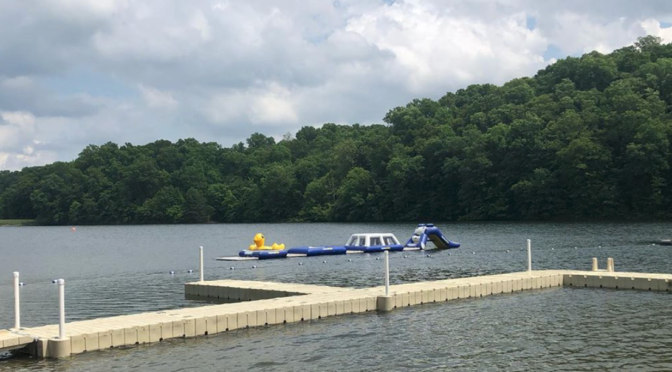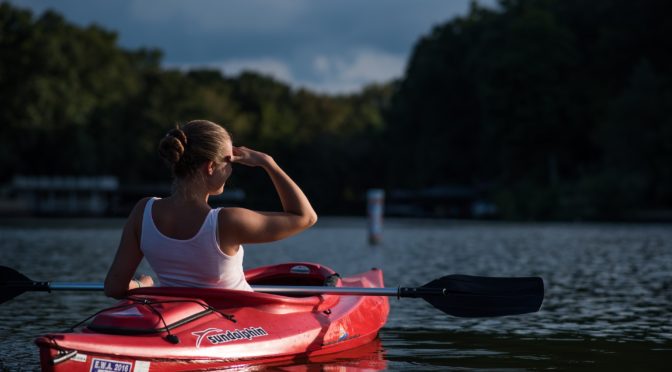Get ready to get back on the water! While we are currently in the middle of an extreme cold period with about a foot of snow in Indiana, we’re also about a month and a half away from Spring. No more cold weather! This means it is time to get all marine equipment ready for the upcoming season. Those that don’t prepare well will be sorry. If a piece of equipment got damaged by winter weather, ill-prepared waterfront owners will be stuck waiting to get on the water. And once dock company’s schedules start to get full it can take weeks to get something repaired. Today we’ll look at what to inspect to make sure your waterfront will be good to go in Spring.
How to Get Your Dock Ready for Boating Season
1. Inspecting Your Dock
Winter is harsh on docks. Snow and ice aren’t like rain in the summer that just drips right off, they pile on top and stay for a long time. So after sitting on top of a dock for several days or weeks, the weather starts to cause damage. So the first thing we should inspect when the weather is nice enough is the dock. First, inspect the decking. Make sure the material looks just as good as before with no rotting, splintering, cracks, or warps. Once you’ve noted the condition of the decking, move onto checking the frames. Look underneath your decking and make sure the frames aren’t warped or rusted. Make sure you notice if your dock is looking like it is sitting in the water lower than usual. It could be the entire system, or just one finger sitting a little low. If that’s the case, then the floats are damaged. Finally, inspect the anchoring and make sure it isn’t rusted or broken.

Now if you noticed any damage, it’s time to make sure to get it fixed now before the season starts. Fixing damaged decking, floats, or anchoring are small problems that can be fixed if caught early. These are all repairs that can be expensive of up to a few thousand dollars, but it’s nothing compared to spending tens of thousands on a brand new dock. If the frames become severely warped or rust and break, then you’ll unfortunately probably have to replace the entire dock. Having an idea of what the damage on your dock is before you call in can help put your nerves at ease rather than waiting on a diagnosis.
2. Examining Your Boat Lift
Snow isn’t a real issue on boat lifts, but ice is. Instead of worrying about warping and cracking, you’ll need to worry if the lift is operational. Before we begin, always check your owner’s manual to see proper winterization techniques recommended from your manufacturer. There a lot of things that can get damaged during the winter on a boat lift. You could find damaged bolts, winches, power units, cables, bunks, or guides. After visually inspecting for wear and tear on any of these parts, it’s a good idea to cycle your lift up and down to make sure it’s working as intended. If you have a cable lift, be sure to listen closely and make sure you hear no snapping or noises coming from the cables. Unfortunately you can’t really replace a cable until it breaks, but it’s good to know it is coming rather than be surprised. For hydraulic lift owners, check your fluid and make it is filled to the appropriate level recommended by your manufacturer. Most issues and repairs needed for lifts will have to be dealt with by an expert. Fortunately, there are many experts with several years of experience at Deaton’s Waterfront Services.
Another aspect of getting your lift ready for the season is the canopy. Lift owners know to remove their canopy and store it for the winter to prevent tearing over the winter. If you leave a canopy on during the winter, snow is going to pile on top of it and destroy it. Call your local lift dealer and schedule them to store and reinstall your canopy every winter and fall. It will save you from having to replace a vinyl each season due to poor care.
3. Checking Your Seawall

The last piece of equipment you need to inspect is your seawall. Snow and ice will also warp and abuse a seawall during the winter. As water freezes and forms a layer of ice, it will push up against a seawall and try to morph it. As the sun appears during the day, it will cause the ice to start to melt and crack. The problem is, at night it will all refreeze and beat against the seawall. This constant cycle will damage the seawall over time and cause it to crack, warp, have gaps, and leak. If a seawall is well made with the right material, it will last for many decades but unfortunately you can never predict when nature will decide to ruin those plans. Inspecting the wall is simple, just walk along and inspect for warped metal, gaps, or leaks. If you notice a problem it will need to be fixed immediately before more damage piles up.
There is a way to help combat the damage that ice can throw at a seawall. If you own a bubbler, it will circulate the water throughout the winter never giving it a chance to settle and freeze. This will help protect anything you may have in the water including a dock, lift, or seawall. It is also helpful in the summer time to get rid of debris such as stray logs.
Final Thoughts To Get Rid of Winter
Getting your equipment working with plenty of time to get your boat prepared for the season is the best thing you can do for your future self and your property. While having damaged equipment will not only drive your property value down until it’s fixed, it also sucks to see everyone out on the water having a blast while you’re not able to. It’s best advised to have your equipment inspected by a waterfront professional sometime in the fall to give yourself plenty of time. Once the schedule fills up for manufacturers and waterfront service shops, it can take weeks or months to get you a new part or get your equipment fixed. So make sure to see if your equipment will need a repair immediately to make sure you can be out there having fun with everyone else. If you feel more comfortable having an expert inspect your dock, feel free to reach out to us here at Deaton’s Waterfront Services. We will send a team out to inspect your equipment for a free quote. As always, feel free to contact us or give us a call at (317) 747-4933.
















 Suitable for Land and Water
Suitable for Land and Water
